Unwinding in Izmir: a Turkish delight
If you're in need of some late season sunshine and relaxation, Izmir makes a great place to unwind, says Jane Duru.
‘Izmir is famous for its girls and its palm trees,’ says my guide İdil, as we make our way along the coastal road, gazing out across the large bay for some hint of life on its north side. Despite bright sunshine, it’s a hazy morning, so thick I can’t tell where the sea stops and the sky begins, and only the faint outline of cargo ships on the horizon provides any clue. İdil’s statement snaps me out of my daydream - after all, it’s not the sort of thing you’d expect to hear from a small, respectable middle-aged Turkish woman; but Idil, a resident for the past 30 years, makes no bones about her adopted city.
Situated on the eastern Aegean coast, and enjoying a climate which promises 300 sunny days a year (a statistic trotted out by many a tourist board, but which seems to be in evidence as my late October visit sees daily temperatures hitting the mid-20s) Izmir is Turkey’s third biggest city, with a population of four million clustered around its bay. Whilst many holidaymakers flock to the coastal resorts of Bodrum and Marmaris further south, Izmir lacks the allure of beaches. However, what it lacks in sandy shores, it makes up for with a cultural heritage and wellness offering that’s unmatched anywhere else in Turkey.
Izmir’s historic roots
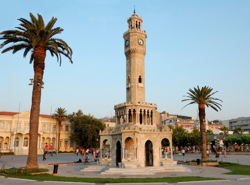 The Konak clock tower is an emblem of the city
The Konak clock tower is an emblem of the cityThinkstock / iStockphoto
With the founding of the city dating back 8,500 years, Izmir is one of the oldest cities in Turkey, and was a something of an ancient melting pot, over the years becoming home to a mixed population of Turks, Levantines (ancient Christians from Italy), Jewish and Greek populations. A catastrophic fire in 1922 razed many of the old buildings to the ground, high-rises springing up in their place. Yet evidence of the city’s colourful past can still be seen, with a Roman Agora, fortress and numerous Ottoman-era buildings still in existence.
Start with a visit to Konak square near the seafront, where people and dogs lie idle in the sun and the shadow of government buildings. Here the 19th-century Konak clock tower stands in commemoration of Sultan Abdulhamid; the clock having been gifted by Kaiser Wilhelm II. Nearby is the tiny Yali Mosque, decorated in Iznik and Kütahya tiles. At Kizlaragasi Han, a restored market, visitors can still see the original Ottoman stone architecture, which gives off an atmospheric whiff of the past, despite the all too modern market stalls selling the ubiquitous evil eye. Top off your tour with a trip to the Asansor, an elevator built in 1907 for the city’s residents, where you’ll enjoy panoramic views out over the bay. The 51m (167ft) ascent is accompanied by a soundtrack from Turkish crooner Dario Moreno, as the lift is on the street where he once lived.
Heading back in time
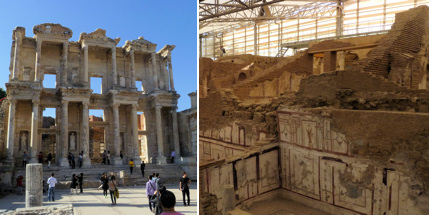 Explore the ancient Roman city of Ephesus
Explore the ancient Roman city of Ephesus Jane Duru
An hour’s drive south, near the town of Selçuk, history buffs can delve even deeper into the past. Up in the secluded hills of Mount Nightingale is a small stone house where the Virgin Mary is said to have lived. Surrounded by cypresses and olive trees, despite the small crowds, it’s a place of stillness and fervent wishing; below the house, a spring feeds three taps dedicated to love, wealth and health. I wash my hands in all of them.
Ten minutes away is the region’s main attraction: the classical Roman city of Ephesus and once home of the Temple of Artemis, one of the Seven Wonders of the Ancient World. First founded in the 10th century BC, Ephesus had several incarnations, reaching its zenith in 600BC with over 250,000 inhabitants. Over 150 years of painstaking renovations have uncovered a city of surprising scale and depth, meaning it’s not a huge feat of the imagination to envision how it once must have looked and gain insight into Turkey’s Greco-Roman past.
At the Upper Gate entrance, the site starts inconspicuously enough, with ancient rubble dotted everywhere. Passing through the cool marble columns of the Agora, up into the Odeon amphitheatre and downhill past the Temple of Hadrian, where cats mew, and statues stand in eternal judgement, the size and scale of the city is breathtaking. The magnificent library of Celsus and the Great Theatre are the main pièce de résistances, whilst paying a visit to the Terraced Houses, an ongoing excavation site, is well worth the separate entrance fee. Keep an eye out for the ancient graffiti advertising a brothel!
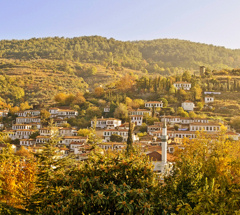 Skip the fruit 'wines' and go to Sirince for the food and views
Skip the fruit 'wines' and go to Sirince for the food and viewsThinkstock / iStockphoto
Stop for lunch in the nearby picturesque village of Sirinçe. High in the hills, the village may no longer be a hidden gem, but Güllü Konaklari is an excellent place to eat. My favourite dish is one comprising two whole chickens baked with figs, a happy marriage held together by a sweet yet savoury stew with hints of cinnamon and black pepper. A postprandial walk to the top of the village (ask for directions to St John Baptist Church) gives a magnificent viewpoint; smoke drifts lazily from whitewashed houses which cling to the hillside, whilst the muezzin’s call sounds down in the valley.
Explore the peninsula
Ephesus isn’t the only attraction – Izmir makes a great base for exploring other parts of the peninsula. Alaçati, an hour away, is worthy of at least a day trip. Set on the western tip of the peninsula, this charming town is very Mediterranean in feel, with narrow cobbled streets, shuttered windows and buildings covered in frothing pink bougainvillea.
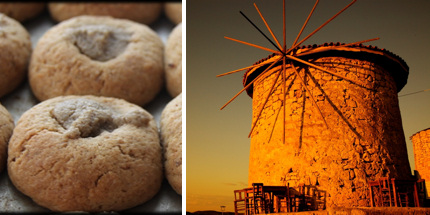 Pick up some kurabiye whilst wandering Alacati's streets
Pick up some kurabiye whilst wandering Alacati's streetsAlaçatı Köy Kurabiyecisi Bakery / Go Turkey
It feels as if I’ve stumbled across a little patch of southern France, with the chi-chi vibes to match. Cutesy boutique hotels such as Beyevi are springing up, and gourmet restaurants are in abundance; it’s no wonder that much of Istanbul decamps here for the summer. If surfer chic is more your thing, a visit to the surf school is a must, as Alacati has some of the best breaks in Turkey. Pick up some delightful kurabiye (dome-shaped Turkish cookies) from the region at Alaçatı Köy Kurabiyecisi Bakery on Tokoğlu Mahallesi; types range from chocolate and doughnut to lemon curd.
Living the good life
South of Izmir, we head to Urla, where the landscape is hemmed in by verdant mountains and so many tangerine groves the temptation to stop and pluck a few proves too hard to resist. Urla is the centre of a small but burgeoning wine industry. Turkish wine may not yet be on a world stage, but it has some of the highest volumes of grape production in the world; it’s just that the grapes are eaten rather than turned into wine. However, the award-winning four-year-old Urla Winery is hoping to change all that, and the number of visitors for wine tastings is rising year on year. During the tasting, I’m pleasantly surprised by the quality of the native grapes – the fiery Bogazkere variety makes for a punchy red, whilst the aromatic demi-sec Bornova Muscat has me reaching for a second glass.
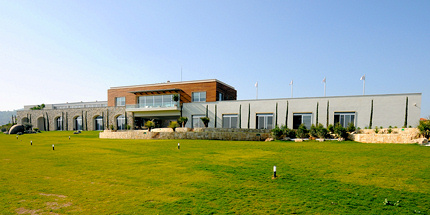 Wine lovers should head to Urla for a taste of Turkish wine
Wine lovers should head to Urla for a taste of Turkish wineUrla Winery
In Izmir proper, the good life doesn’t stop. I’m staying at the Kaya Izmir, one of two spa hotels in the hilly Balcova region, famous for its underwater hot springs, and as the site of the Baths of Agamemnon. High in mineral content, the water is said to have healing properties, a fact that is no doubt set to boost Izmir’s bid to host Expo 2020 as it touts itself as a haven for medical tourism. The spa at my hotel – free to guests – is extensive, with heated pools (both indoor and outdoor) plus sauna, steam room and all manner of treatments. I top it all off with a bracing bucket-of-cold-water shower.
After a few days in Izmir, I can see what Idil means (although the comment on the ‘girls’ is another trip for another time – and person – I think) and I'm not just talking about the palm trees, numerous though they are. If Istanbul is the slightly uptight, worldly older brother, Izmir is its younger, laid-back, tropical-feeling sibling, the one that’s telling you to just relax and take in the view.
-------------------------------------------------------------------------------------
NEED TO KNOW
Getting there: Flights to Izmir are run by Turkish Airlines travelling via Istanbul. Prices start from approximately £250 return.
Where to stay: The plush, slightly corporate Kaya Izmir Thermal and Convention hotel and spa, Ilıca Mah. Zeytin Sk, is situated on the outskirts of Izmir, a 15-minute drive from the centre of the city. The excellent spa is worth sampling but you might want to go elsewhere for food. Double rooms from £200 per night.
Getting around: If you are staying centrally within Izmir, it’s possible to get around on foot, but the city is extensive and to explore the rest of the peninsula, you’ll need a car.
More information: Find out more at Go To Turkey.
Do you have any Feedback about this page?
© 2025 Columbus Travel Media Ltd. All rights reserved. No part of this site may be reproduced without our written permission, click here for information on Columbus Content Solutions.









 You know where
You know where